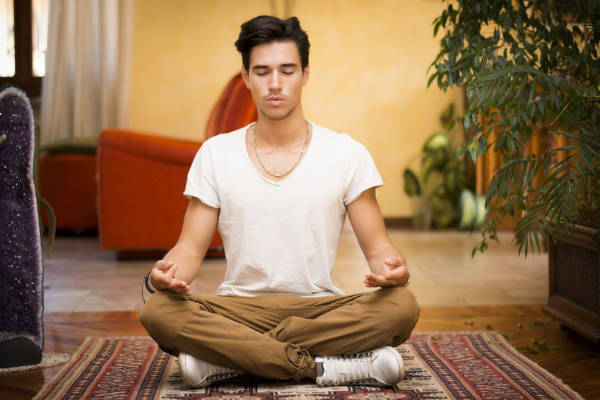How to Meditate

When many people hear the word “meditation,” they imagine a mysterious and difficult skill, one that is for advanced spiritual practitioners only. In fact, nothing could be further from the truth! Meditation is practiced by millions of people worldwide, sometimes as part of a spiritual practice and sometimes as part of everyday life. Even a few minutes of sitting per day can have a myriad of health benefits.
The most wonderful part about meditation is that there’s no need to feel intimidated, overwhelmed, or unprepared. It’s an incredibly simple practice that is available to anyone, anywhere. It’s free to begin, and you can meditate for as little or as long as you like.
There are many different methods of meditating. No matter what method you choose to start with, here are a few tips for getting started with your practice.
Find the space
While it’s technically possible to meditate anywhere, it’s much easier to find your grounding in a quiet, peaceful space. Having a dedicated area of the house — even just a corner — is ideal, but you can start by finding any quiet spot to sit.
Try to use the same mat or rug for your practice every time. Eventually, simply bringing out that mat will signal to your mind that it’s time to relax and get centered. It also elevates the practice to one that’s important, special and worth dedicating time to. If you have difficulty sitting on the floor, use a chair instead.
Set the mood
All meditators should take a couple extra steps to help them set a calming mood in the space. Certain methods of meditating may require specific objects, but a good general rule is to start by lowering the lights, lighting a couple candles, and playing some peaceful music.
This is especially important if you live in a noisy area, have roommates, or simply have a hard time getting your mind to be quiet — which most people do at first!
Start small
It’s not necessary to try to sit still for 20 minutes in your first session. In fact, it’s probably not a good idea. Gradually increasing the length of your sessions as you feel ready is much better for morale than having to cut sessions short. It allows you to focus on developing a strong practice rather than simply a long one. It’s all about quality, not quantity.
Practicing for just two minutes each day will help you get into the routine. After that, you should aim to meditate for at least 10 minutes per day.
Develop a schedule
Many people like to sit every morning and meditate, whether for ten minutes or an hour. It starts the day on a calm, peaceful note. Others like to end their day by sitting on their mat before sleep. Still others like to break up their day with a session, rediscovering their center in the middle of hopping from task to task.
This is all about individual preference, so develop a schedule that works for you.
Explore different methods
On a similar note, it’s worthwhile to experiment with different traditions to find the practice that feels right to you. There are far too many ways to meditate to describe here, and different methods work for different people.
Some methods were developed as part of spiritual traditions such as Buddhism or Hinduism, but are now used by all kinds of people. Others were designed for secular, non-religious practitioners who seek to reduce anxiety, insomnia and other mental health issues. Some popular methods you may come across include Kundalini, transcendental meditation, Zen, mindfulness and guided visualizations.
Start with your breath
One of the most basic and common ways of meditating involves focusing on your breath. This is a great place to start, since it's simple, easy to remember and effective. This method is one form of mindfulness meditation.
To start, find a comfortable seated position on your mat or on a chair. Then start to focus on your breath. You can say to yourself, "I feel myself breathing in. I feel myself breathing out." Focus on the sensation of each inhale and exhale.
Your mind will wander to other thoughts, and that's okay -- it's all part of the practice. Practice noticing where your mind goes without judging or following it. Just see the thoughts and let them pass. Then return again to the breath.
That's it - it's that simple! Mindfulness can also involve concentrating on things other than the breath, such as bodily sensations, emotions or mantras. But mindful breathing is the foundation of it all, and it will serve you well no matter what method you ultimately choose.
Be patient with yourself
This is perhaps the most important tip. In everyday life, we’re accustomed to striving to meet certain standards and trying to be successful. Meditating is not about that. It’s merely supposed to help you relax and connect more deeply with yourself. It doesn’t need to become a source of competition or stress.
Rather than focusing on specific goals, just try to be gentle and patient with yourself as you get started on this journey. If you find yourself unable to quiet your mind, that’s perfectly normal. If you have difficulty sticking to your schedule, that’s also normal. Don’t beat yourself up! Simply notice your thoughts and return to your practice.
If you continue to respond to any distractions and struggles with a mindful breath or two, you have already turned meditation into a personal practice.
Detailed Meditation Instructions




